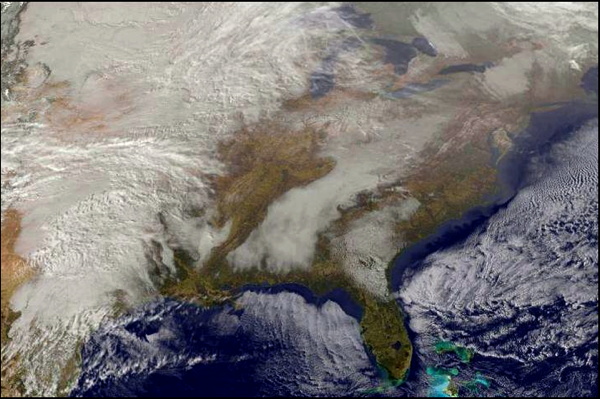The North American Climate-Change Denier is an invasive species that poses serious risk to other plant and animal life on the planet.
Published in the March 2014 issue of the New Internationalist.
Most regions of the United States have endured an unusually cold winter this year. And, unlike its impact on other fauna, the frigid weather has brought out of hibernation the mammal commonly known as the North American Climate-Change Denier.
Unfortunately, this is not an endangered species. And come to think of it, members of its genus are rarely dormant for long, particularly the males.
One prominent representative of the species—known to appear in the New York City ecosystem, as well as on right-wing cable television programs—is called Donald Trump. Also referred to as “The Donald,” this denier recently emerged on Twitter to argue, “This very expensive GLOBAL WARMING bullshit has got to stop. Our planet is freezing…”
Similarly incisive pundits have been spotted in Washington, DC and other major broadcast centers. They have often been heard emitting distinctive calls such as, “Forget warming, we’re looking at global cooling” and “It’s a hoax.”
A dip in temperatures across much of the U.S.—particularly a cold snap in early January caused by the so-called “Polar Vortex”—has created ample habitat hospitable to climate-change deniers. These individuals contend that the continued existence of winter freezes clearly negate any prospect that average global temperatures could be rising. (Never mind that these averages are not based on any individual weather event but rather are trends that span years.)
Of course, the shift that scientists currently fear—an estimated rise of 2°C to 4°C over the course of the current century—leaves plenty of room for cold weather. A rise of this magnitude, while inviting havoc via elevated sea levels and more severe droughts, would by no means eliminate blizzards or cold fronts. On the contrary, a warmer climate means more moisture in the air, and it could also involve more radical fluctuations in the jet stream. These changes are likely to translate into the more frequent occurrence of extreme weather, including winter storms—and, ironically, more opportunities for deniers to propagate.
Further compounding the confusion is the fact that the common North American Climate Denier is loathe to acknowledge that the mainland United States, in actuality, constitutes only a very small fraction of the earth’s total surface.
Since typically provincial deniers are not known to bother with international news—unless the reports pertain to a country currently being “liberated” for its oil—they are likely to have little interest in headlines like that in the January 6 edition of the Sydney Morning Herald, which read: “‘Highly significant’ heatwave smashes Australian records.”
Such stories explain how, even as the U.S. has shivered through some cold months of late, other parts of the world have sweated out some rather warm ones, resulting in a global average that indeed validates concerns about rising temperatures.
In an unusual step, officials of the federal government have come forward to warn about the dangers of listening too closely to roaming climate deniers. Instead of letting the U.S. Fish and Wildlife Service handle public safety announcements about potentially feral populations, the White House itself produced a two-minute video with science advisor John Holdren explaining, “If you’ve been hearing that extreme cold spells… disprove global warming, don’t believe it. The fact is that no single weather episode can either prove or disprove global climate change.”
While administration officials have not stated it explicitly, caution should also be exercised before any attempt to feed deniers who are trolling comment sections located in the wilds of the World Wide Web.
In conclusion, the North American Climate-Change Denier is an invasive species that poses serious risk to other plant and animal life on the planet. Our best hope is that aggravation over protests targeting fossil fuel corporations might disrupt its breeding patterns—and that campaigns of public awareness can, as much as possible, limit its domestic and international migration.
__________
Photo credit: NOAA / Wikimedia Commons.
